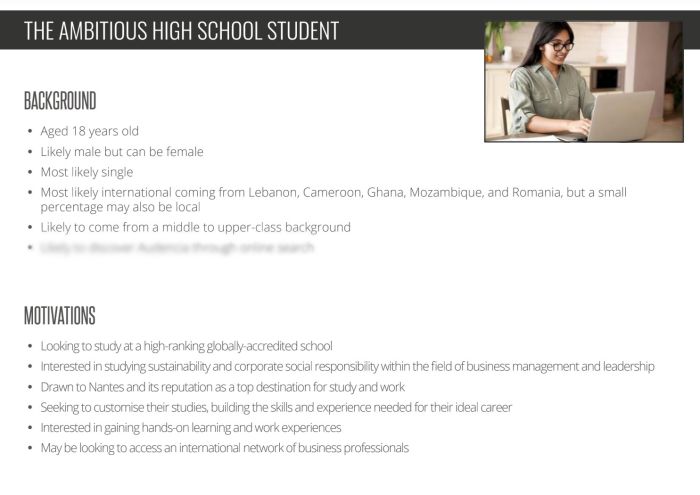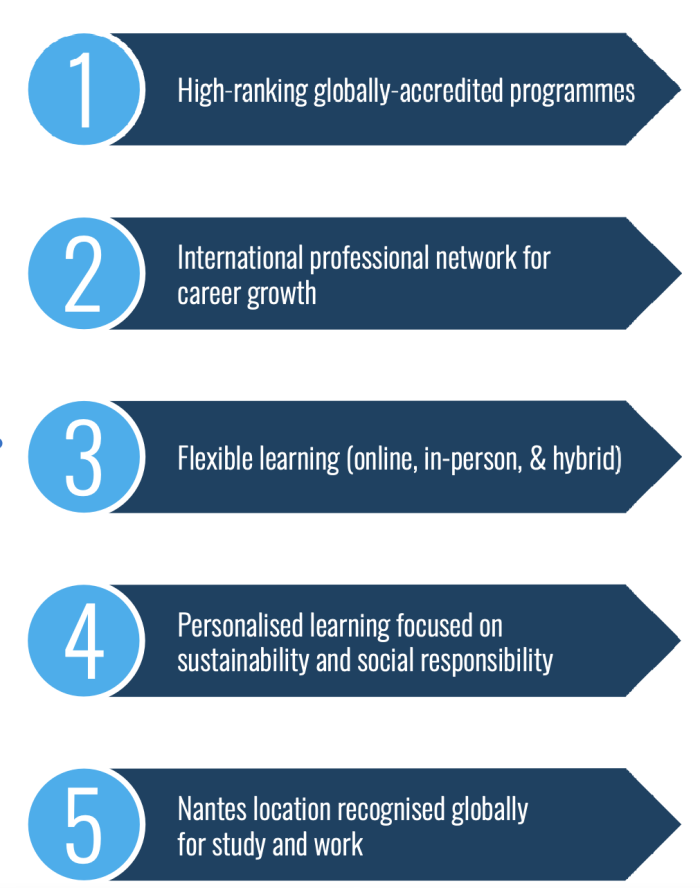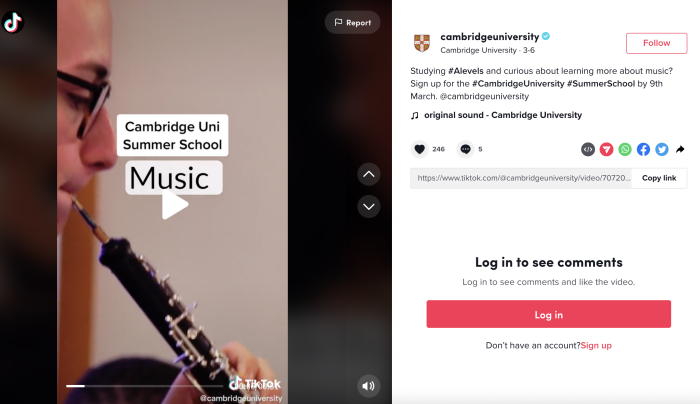Today, social media is more than just a tool for connecting with friends and family; it has become a vehicle for brands to engage digital audiences worldwide. For schools, that means more opportunities to reach prospective students and boost admissions.
As of 2023, there were 4.95 billion active social media users worldwide. Unsurprisingly, many successful schools are now active on social media, working to garner attention, build their reputation, and increase admissions. But a lot goes into making a successful social media presence. You can’t just post information about your school and expect the applications to roll in. Harnessing the power of social media platforms requires careful planning and management; it requires a social media strategy.
If you’re wondering what your school can do to optimize its digital presence, here’s a closer look at some key considerations for implementing a successful social media strategy.

1. Identify the Values and Mission You Want to Promote
A good social media strategy starts with understanding your goals. Your social media channels are an extension of your school’s digital presence, so your activity across those channels should align with your other digital marketing efforts.
You may be looking to promote your school as a research institution, or you may be looking to diversify international applications. To understand what the big pillars of your institution are, a good tip is to consider which aspects of your school attract prospective students the most. This often involves the creation of student “personas” – a profile of your school’s typical prospects that cover their desires, motivations, and concerns. You can then use those personas to frame your social media strategy and ensure you create content relevant to your target audience.
Example: Here is an example of a persona developed by HEM called “The Ambitious High School Student.” Here, we identify the persona’s key motivations when deciding on the right school for their education.

With a few personas like these, you can identify what attracts students the most to your campus. In other words, your school’s Unique Selling Points (USPs). The example below illustrates some USPs your school may create based on their target personas.

Compiling a list of unique selling points is a great way to determine what aspects of your school should be showcased on social media channels. By leveraging information on your current students, you can cultivate a persona-oriented social media presence that develops a clear image of your brand.
Example: This Instagram post from Audencia Business School serves to solidify its reputation for offering high-ranking and globally accredited programs, which is no doubt a key selling point for the school.

Source: Instagram
By identifying what makes your school special, you can put your best foot forward on social media and create content linked to your overarching brand.
2. Curate Content Across Platforms for a Strong Social Media Strategy for Higher Education
Once you understand what you want to say, you must know how to disseminate that message effectively. The average social media user engages with an average of 6.6 social media platforms. To maximize its reach, your school should consider what platforms your audience uses so that content can be tailored.
Every social media platform has its style and benefits. An excellent social media strategy for higher education should account for that fact and take advantage of the unique features available across different channels.
Short-form video will see the most growth in 2023, this is according to HubSpot.
Example: The University of Cambridge created a TikTok to promote its Summer School. Here, video is an engaging format well-suited to content in the school’s Music program. It allows prospects to visualize life at the school while receiving important information on registration deadlines.

Source: TikTok
Instagram reels are another way to spread key information concisely and appealingly. For example, the University of Sydney created an Instagram post on opening its new Engineering and Technology precinct. Rather than just making an announcement, the school uses the video function to give users a teaser of the new facilities.

Source: Instagram
While video can do wonders for social media engagement, it’s important to note that video content takes more time to plan and execute than other posts. In that case, your school may want to consider creating a video content strategy to use these platforms properly.
3. Shine a Light on Your School Community
Social media in higher education is a chance to turn your school and its brand into a living, breathing community. Prospects are investing not only in your brand but also in the experience it offers. Through content that showcases student stories, clubs and activities, and faculty members, prospects can get an idea of what life on your campus is truly like.
Your current students are some of your best resources for attracting new students; their experiences will entice prospects to follow in their footsteps. Many schools have turned to student-generated content to supplement their social media channels. This involves creating online communities for your students, faculty, admin, and alumni and encouraging them to get involved with your school’s social media accounts.
The University of Melbourne regularly allows students to take the stage on its TikTok accounts. The example below is a student-led post that illustrates the different clubs on offer at the university.

Source: TikTok
Schools should aim to strike a balance between content on the academic and social experience at their institution to give prospects a better idea of what they can achieve on campus.
Example: The University of Edinburgh’s Instagram page features a series of posts titled “Creative Sparks.” This series highlights ways in which its students and staff have gone on to succeed as entrepreneurs in creative industries across the UK.

Source: Instagram
Nowadays, prospects don’t just want to hear about your school’s selling points; they want to see evidence of them in action. When you tune into what’s happening on your school’s own campus, you’ll find a ton of real-life content that speaks for itself. By bringing that content into the spotlight and making the community the focus of your posts, you can leverage social media to bring your institution to life authentically.
4. Build Your School’s Reputation in the Education Sector
Like all content you create, your school’s social media presence reflects its image and standing in the sector. Your school is fighting for exposure on social media platforms and competing with other educational institutions. A common question often asked is: how do you market higher education? Higher education social media marketing efforts should consider ways to support the credibility of your institution. The best way to do this is by integrating relevant content that appeals to industries today.
Many schools’ reputation in the education sector is based on their status as research institutions. They are at the forefront of leading conversations in different subject fields. To maintain that perception, your school’s social media strategy should consider content demonstrating its authority in the field.
Example: A Facebook post from The University of Manchester highlighted how one of its Professors was recognized for his contribution to the field of Computer Science.

Source: Facebook
LinkedIn is another great resource that attracts budding young professionals looking to advance their careers, especially when it comes to developing a social media strategy for universities. As such, the platform is suitable for sharing industry-related articles or academic updates.
Example: Yale University used a LinkedIn post to announce the launch of its new cutting-edge MSc program – the first of its kind to combine surgery and engineering.

Source: LinkedIn
Prospects come away from these posts knowing they are joining a reputable institution that is keeping up to date with – and pioneering – the latest industry trends. With a solid social media presence, your school can boost brand awareness while reinforcing its academic reputation.
5. Keep Your Social Media in Higher Education Updated
A consistent social media presence is the key to keeping your school in the minds of prospective students. Consistency means keeping your platforms active with regular posts. A dead social media channel not only hurts the recognition of your brand but also calls into question the relevance of your institution in today’s sector. If no one is talking about or hearing from a school, then maybe it’s not so renowned. Good social media marketing for higher education keeps this in mind and takes active steps to spotlight your school.
Updating your social media strategy for higher education will prevent your school from getting lost in the void. We’ve already seen several examples of the kind of content you can post to garner attention. Open houses, graduation days, online information sessions, and sporting events are all things that you can share to illustrate the experience on offer at your schools.
While consistency is key, keep in mind that the quality of your posts is more important than the quantity. Each post should retain a purpose and contribute to an overall impression of your brand. In addition, your posts should be optimized to ensure information is clear and visitors are easily directed to the relevant web page.
Automate the Process
Of course, maintaining multiple social media channels with regular content is easier said than done. Many schools turn to marketing automation software to streamline the process. HubSpot or HootSuite are designed to help you create and schedule posts across various platforms. This ensures a regular flow of content while still allowing you to tailor posts to different networks.
Along with scheduling and managing posts, marketing automation tools also offer a function for social monitoring. By monitoring your school’s reputation and visibility on social media, you can identify which platforms are most relevant for your school and which content best engages your audience. By tracking engagement on posts, your school can also ensure it responds promptly to comments or questions from prospective students.
If you want to take some of the work off and simplify the process, consider investing in paid social ads. As competition for views on social media channels remains high, paid ads can ensure that your efforts don’t go unnoticed. You can be sure that people will see the content you’re posting. Many social media platforms, such as Facebook, will even let you pay to target your ads to specific audiences based on age, location, interest, education, and more. You can tailor your ads to prospective students, parents, and friends.
Keep an Eye on Your Competition
As noted above, competition on social media channels can be heavy; maintaining your presence is largely about differentiating your brand and getting a leg up in the digital space. But first, knowing who you’re up against is a good idea. The easiest way is to identify your school’s competitors and browse their social media accounts to monitor their activity.
Look out for how they’re addressing student interests in their content and the level of engagement their posts gather. You can use this information to inspire your posts and set the bar for the activity level you should work towards. By comparing the social media presence of your competitors, you can get an idea of how well your current social strategy is performing and find opportunities to improve.
Example: This is a template of a social media competitive analysis report. The spreadsheet can evaluate your competitors’ presence on various social media platforms, with key information on their active accounts and followers.

Source: Aha!
As more and more schools work to expand their digital presence, a strong social media strategy is essential to compete in the education sector today. Starting with a social media self-assessment is a great way to measure your social efforts, discover how well your school is meeting its marketing goals, and identify areas of opportunity for meaningful engagement.
Today, social media has become more than a tool for communication and connection. It is a form of visual storytelling that you can use to create a vibrant and compelling narrative around your school. Every school has its own brand and unique messaging. With the right social media strategy, you can spread the word and reach prospective students far and wide.







